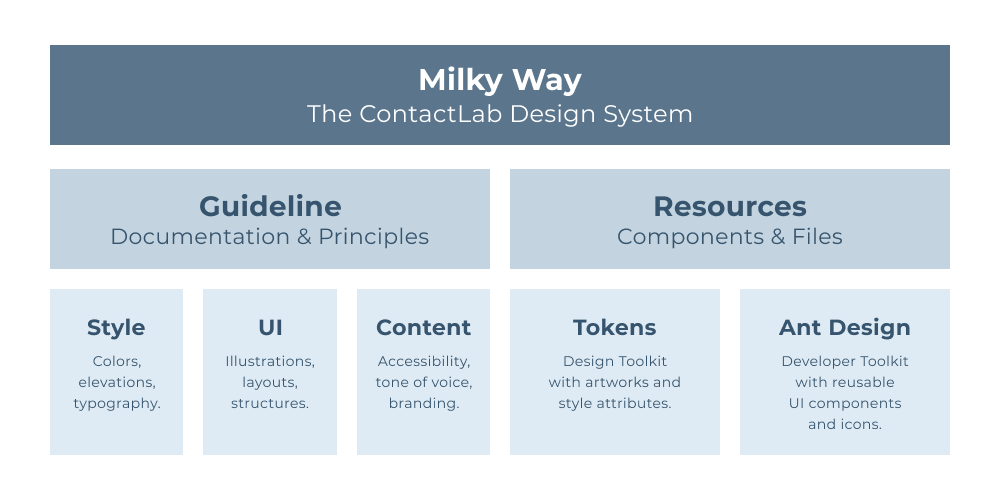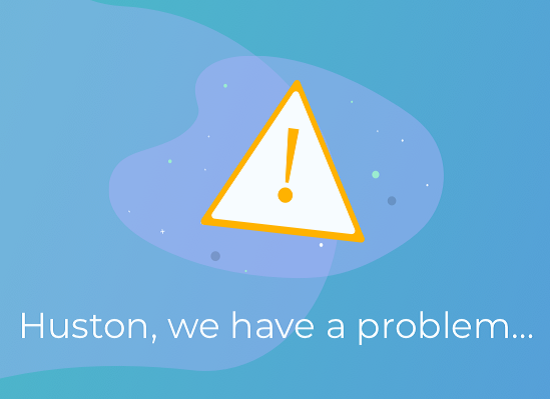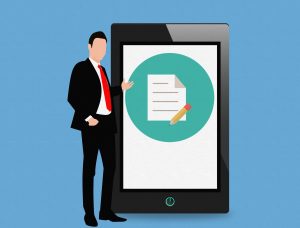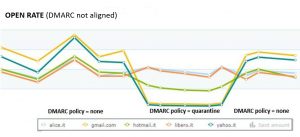The health emergency we are facing and the lockdown we have been called to is changing our needs and habits as consumers. With the closure of shops and the current access restrictions, important changes in the way we buy are now a fact.
 Ecommerce has become a fundamental shopping channel in a time of social distancing and rigid protocols for in-store access. Awaiting a slow return to (new) normality, experts argue that the use of ecommerce will be a constant in the future.
Ecommerce has become a fundamental shopping channel in a time of social distancing and rigid protocols for in-store access. Awaiting a slow return to (new) normality, experts argue that the use of ecommerce will be a constant in the future.
The number of online users is growing, but especially the sales that exceed +50% compared to the same period in 2019 and over +20% when comparing volumes with those of the weeks before the emergency (source: Inmediato Mediaplus).
The ecommerce is confirmed as a valid sales channel for those who already used it in the past but also for those who have considered it only recently, to support the traditional in-store business.
But is it going smoothly?
However, the massive use of online shopping has highlighted some limitations, mainly due to a partial and discontinuous digitalisation of brand processes and a reduced optimisation of operations.
In fact, brands are facing problems related to their core activities – such as unusual product demand, adapting warehouse management to a pressing demand, strengthening and diversifying the distribution network, hiring staff for new tasks, physical distancing in store, etc. etc. – but also linked to an inevitable new way of using technology. In fact to meet the rising of new needs and the different customers’ priorities and to satisfy increasingly high expectations, brands have to review the way they do business online. And this is where Marketing Automation comes into play. If the health emergency has increased traffic and orders on your ecommerce, be ready and automate as many tasks as possible.
What it means to do Marketing Automation for ecommerce
In general when we talk about Marketing Automation we refer to a set of rules that apply to contacts with similar characteristics – status or behavior – along a path designed by the brand. Rules that trigger actions when specific events occur and when the appropriate conditions are met. In short, thanks to Marketing Automation you can create a highly personalized customer experience tailored to the individual profile with customer-relevant communications sent at the best time.
E-commerce solutions can express their best when combined with marketing automation tools to guide the customer through the entire online lifecycle, for a single experience or for the entire duration of the relationship with the brand.
Automating the communication flows of your ecommerce business allows you to simplify and speed up a series of actions that could not be handled efficiently by any human being or by an entire team.
The benefits from the collaboration of the two technologies are especially important in terms of:
- Improvement of the relationship: good marketing automation always brings with it a deep knowledge of the customers through the availability of unique enriched profiles that can be used for communication strategies and messages designed for each individual contact.
- Messages timeliness: the best way to be close to customers is to anticipate their needs and deliver the correct communications at the right time, for example on the status of an order.
- Integrated communication: on any channel and at any time, each customer is recognized and managed as unique, consistently, regardless of the origin of the contact or the source of information about him.
- Increased sales and loyalty: meeting expectations and fulfilling promises allows the brand to gain enough authority to entice customers to buy and buy more.
Let’s try to understand better with some examples
Package tracking
Try putting yourself in your customers’ shoes. What would you like to happen as soon as you click “proceed with payment?”
 Surely you would like to know step by step, at what point on the journey to your home is the package. You would like to receive for example an email or a push notification at every change of status, with an indication of the expected delivery time, including any hiccups. The brand could perhaps, in the face of unexpected delays, consider an ad hoc communication with a discount voucher on the next purchase.
Surely you would like to know step by step, at what point on the journey to your home is the package. You would like to receive for example an email or a push notification at every change of status, with an indication of the expected delivery time, including any hiccups. The brand could perhaps, in the face of unexpected delays, consider an ad hoc communication with a discount voucher on the next purchase.
Or trigger a call by the customer care who will inform verbally about the delay and apologize for any problems this may cause.
And everything is activated automatically and in real time. How many times did you receive your order and only the following day, the email of successful shipment? Or on the contrary the confirmation of an order and the shipment in 48 hours and after a week still nothing?
Well, the timely tracking of shipments transmits to the customer a sense of attention and care that should not end with the purchase or with the achievement of what is your main objective. It must continue beyond and contribute to increasing the level of reliability of the brand.
You have to resort to marketing automation because it is unthinkable to monitor one by one all your customers though they all deserve to be treated as if they were unique.
Shopping abandoned cart or expired
Imagine a product added to the cart then abandoned before the conclusion of the purchase or the expiration of the session. Each of these conditions is a lost business opportunity without a proper, immediate and personalized follow up.
 You can decide to send after hours or days, an email to invite the customer to retrieve his cart or alternatively, not to miss the product or service he had selected.
You can decide to send after hours or days, an email to invite the customer to retrieve his cart or alternatively, not to miss the product or service he had selected.
Since you know your contact, you can leverage this knowledge and marketing automation to improve his user experience through:
- Information on his buying habits: you can differentiate the content of the message according to his average spending. You can then decide to offer him a percentage discount if he is a buyer with low spending level – or even a new entries – or a bonus with a defined value if a high-spending, but that can only be used when he reaches a higher amount than usual. You can then try to increase its value for your brand.
- Information about his online behavior: you can differentiate the moment you send him the message, choosing the morning or the evening according to his online browsing habits for example, reaching him at the time of day that he usually dedicates to your brand.
- Information on how to access the email: you can differentiate the content according to the preferred channel and, for example for mobile customers, make it easier and more immediate to use the content on smaller screen devices, choosing text and images ad hoc. You can also take advantage of this to cross-channel.
Post-purchase caring
One of the most reliable ways to optimize products and services remains to get feedback directly from customers. What a better way to do this than after an online purchase? A few moments after the shipment is delivered, send them a post-purchase survey or a simple NPS or again a review request on specialized sites.
 For example, you can ask whether the product meets expectations. In the case of a low rating, you may trigger a call from the customer care or send a notification with details of the return policy, perhaps accompanied by a discount for a second purchase to be made in the short term. If the rating is positive, you could ask to share it on the social media or you could ask to be a testimonial for the brand and offer to double the loyalty points on the next purchase. Or again, present your positive experience to a friend with a gift for both.
For example, you can ask whether the product meets expectations. In the case of a low rating, you may trigger a call from the customer care or send a notification with details of the return policy, perhaps accompanied by a discount for a second purchase to be made in the short term. If the rating is positive, you could ask to share it on the social media or you could ask to be a testimonial for the brand and offer to double the loyalty points on the next purchase. Or again, present your positive experience to a friend with a gift for both.
As an alternative to the survey, you could continue to pamper your customer after receiving the product, with value-added editorial content initiatives. Are you a retail brand? Send them video-recipes that use ingredients taken directly from their last order and maybe something new to make them come back to see you. Are cameras your core business? Conclude partnerships with photography schools and together give a discount voucher for his first enrollment in an online course that will inevitably require new equipment. Do you sell products for sport? Make a collection of sessions with personal trainers dedicated to your client’s favourite activity. The goal is always the same, stay in touch, nurture the relationship and create new business opportunities. Automatically and designed by the brand.
From the processing of all the data, does it appear that some customers would still buy even without incentives? Then focus on something else to keep the conversation alive, perhaps on the quality of your offer or the value of your brand. For example, you could opt for solidarity or sustainability initiatives such as the fundraisers that are emerging in this period of emergency and in which each of them can participate by choosing you. A communication that enhances your social choice and makes your contacts proud to be your customer and contribute to the cause.
And what about he whishlist?
 Why ahouls a wish remain a dream? When a customer puts a product on his wishlist, it may be a product or service temporarily unavailable but in many cases he is simply not ready to buy.
Why ahouls a wish remain a dream? When a customer puts a product on his wishlist, it may be a product or service temporarily unavailable but in many cases he is simply not ready to buy.
Don’t forget about him and he won’t forget about you. Keep him updated, offer him similar available products or maybe at a lower cost. Remind him what he can do once he has purchased the product, make him dream to the point of tempting him to buy.
Let’s take a brand from the travel world and a customer who is thinking about holidays as soon as he can leave. Does he put a trip in his whislist? Fine, become his long-distance travel agent. Send him excerpts from guides, links to testimonials from travelers around the world, details of all the activities he can do once he leaves…Propose all the on-site collaborations that you have made and that give him access to services at discounted prices. Draw for him a journey made in steps that will accompany him to the purchase of his trip and beyond.
Concluding
What we have proposed are just simple cases in which marketing automation complements an ecommerce in its hard task of selling, intermediated by a monitor. Small examples that allow the brand to be closer to customers, make them feel less lonely, shorten distances for a lasting relationship, simply and automatically.
Examples that highlight how technology, when well used and combined with excellent digital marketing services, can really make a difference to business results.
Contact us and we’ll see together how the Contactlab Marketing Cloud and the competences of a team of experts can help you in always being ready and able to get the most from each single contact occasion with your customers.



 The inspiration also comes down to the space-themed illustrations – new style, new rules, new perspectives for a new frontier to reach – that are giving new life to our Marketing Cloud. The idea is a constellation of elements that relate to each other, evolve and move as one. The set of principles and conventions on which these associations are based are shared and discussed in
The inspiration also comes down to the space-themed illustrations – new style, new rules, new perspectives for a new frontier to reach – that are giving new life to our Marketing Cloud. The idea is a constellation of elements that relate to each other, evolve and move as one. The set of principles and conventions on which these associations are based are shared and discussed in 





 It is widely believed that customers to focus on are the loyal ones, who have bought more recently or spent more. With few resources you keep them on board in a profitable way. Acquiring a new customer costs at least 5 times more than retaining an existing one (source: Harvard Business Review).
It is widely believed that customers to focus on are the loyal ones, who have bought more recently or spent more. With few resources you keep them on board in a profitable way. Acquiring a new customer costs at least 5 times more than retaining an existing one (source: Harvard Business Review). Or you may decide that under a certain value or for some clusters it is no longer convenient to continue to promote engagement activities for example for customers who have not purchased recently, frequently and whose spending has been low or negligible.
Or you may decide that under a certain value or for some clusters it is no longer convenient to continue to promote engagement activities for example for customers who have not purchased recently, frequently and whose spending has been low or negligible.

 There is an incredible increase in data sources compared to the past. Consumers are reducing distances through many channels, many of them digital. We see many more people online who, according to recent studies, spend almost 10% more of their time online than just a few months ago, leaving different and often uncoordinated traces here and there on the web, and chasing brands’ proposals based on new variables.
There is an incredible increase in data sources compared to the past. Consumers are reducing distances through many channels, many of them digital. We see many more people online who, according to recent studies, spend almost 10% more of their time online than just a few months ago, leaving different and often uncoordinated traces here and there on the web, and chasing brands’ proposals based on new variables.
 Content, timeliness, channel. During the lockdown time it has become perhaps even more important than in the past to communicate:
Content, timeliness, channel. During the lockdown time it has become perhaps even more important than in the past to communicate:
 In order to manage all the steps timely and to be sure that the largest number of customers respond and take advantage of the gift, your gym has chosen to rely on marketing automation tools. They have designed a journey to bring you from the first promotional email to the voucher!
In order to manage all the steps timely and to be sure that the largest number of customers respond and take advantage of the gift, your gym has chosen to rely on marketing automation tools. They have designed a journey to bring you from the first promotional email to the voucher! Please note that your gym does not have the correct and / or usable email address for all the subscribers. For this reason it also promotes the availability of the form on social accounts and via local radio to reach as many contacts as possible.
Please note that your gym does not have the correct and / or usable email address for all the subscribers. For this reason it also promotes the availability of the form on social accounts and via local radio to reach as many contacts as possible.
 Ecommerce has become a fundamental shopping channel in a time of social distancing and rigid protocols for in-store access. Awaiting a slow return to (new) normality, experts argue that the use of ecommerce will be a constant in the future.
Ecommerce has become a fundamental shopping channel in a time of social distancing and rigid protocols for in-store access. Awaiting a slow return to (new) normality, experts argue that the use of ecommerce will be a constant in the future. Surely you would like to know step by step, at what point on the journey to your home is the package. You would like to receive for example an email or a push notification at every change of status, with an indication of the expected delivery time, including any hiccups. The brand could perhaps, in the face of unexpected delays, consider an ad hoc communication with a discount voucher on the next purchase.
Surely you would like to know step by step, at what point on the journey to your home is the package. You would like to receive for example an email or a push notification at every change of status, with an indication of the expected delivery time, including any hiccups. The brand could perhaps, in the face of unexpected delays, consider an ad hoc communication with a discount voucher on the next purchase. You can decide to send after hours or days, an email to invite the customer to retrieve his cart or alternatively, not to miss the product or service he had selected.
You can decide to send after hours or days, an email to invite the customer to retrieve his cart or alternatively, not to miss the product or service he had selected. For example, you can ask whether the product meets expectations. In the case of a low rating, you may trigger a call from the customer care or send a notification with details of the return policy, perhaps accompanied by a discount for a second purchase to be made in the short term. If the rating is positive, you could ask to share it on the social media or you could ask to be a testimonial for the brand and offer to double the loyalty points on the next purchase. Or again, present your positive experience to a friend with a gift for both.
For example, you can ask whether the product meets expectations. In the case of a low rating, you may trigger a call from the customer care or send a notification with details of the return policy, perhaps accompanied by a discount for a second purchase to be made in the short term. If the rating is positive, you could ask to share it on the social media or you could ask to be a testimonial for the brand and offer to double the loyalty points on the next purchase. Or again, present your positive experience to a friend with a gift for both. Why ahouls a wish remain a dream? When a customer puts a product on his wishlist, it may be a product or service temporarily unavailable but in many cases he is simply not ready to buy.
Why ahouls a wish remain a dream? When a customer puts a product on his wishlist, it may be a product or service temporarily unavailable but in many cases he is simply not ready to buy.







